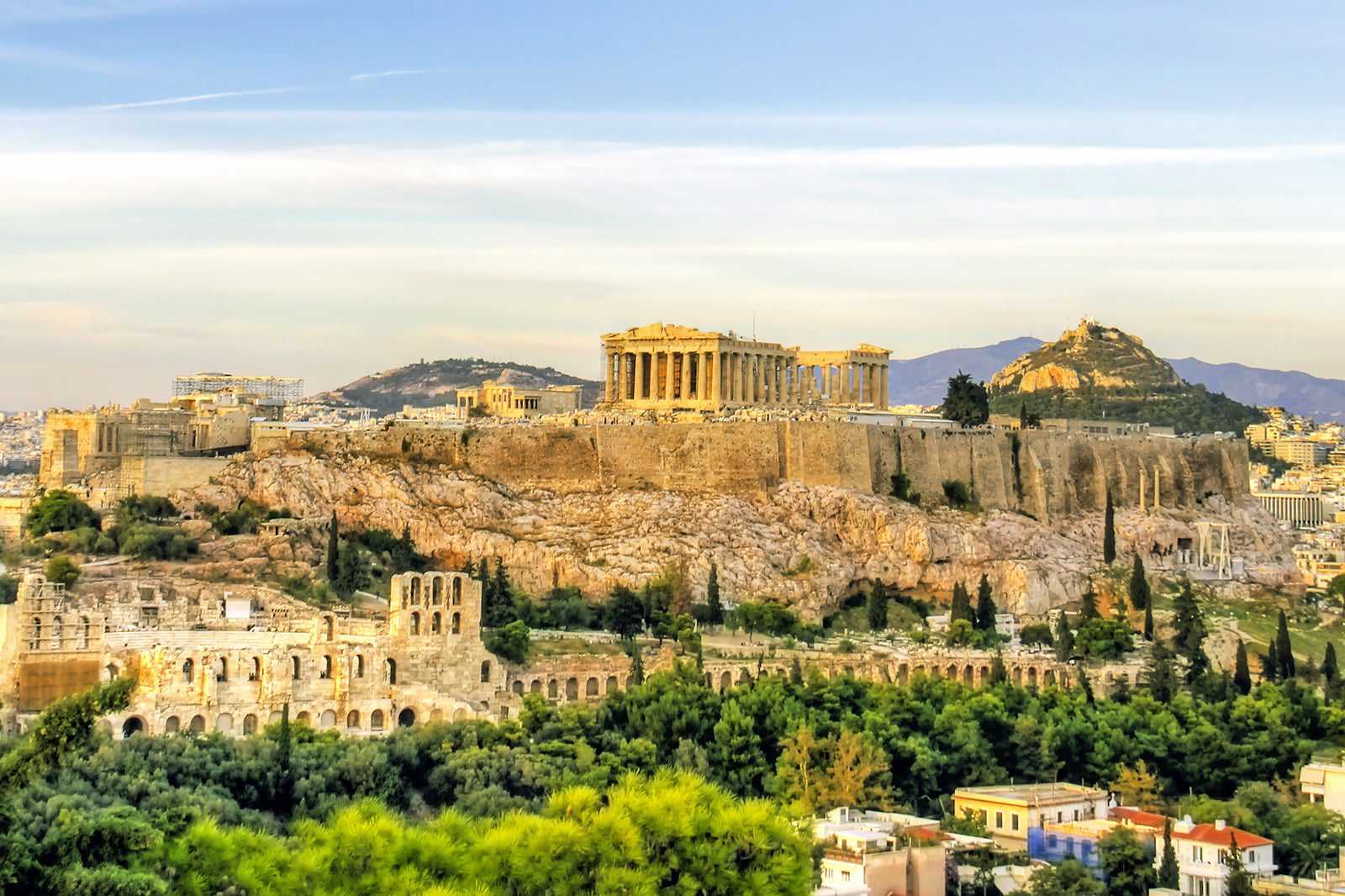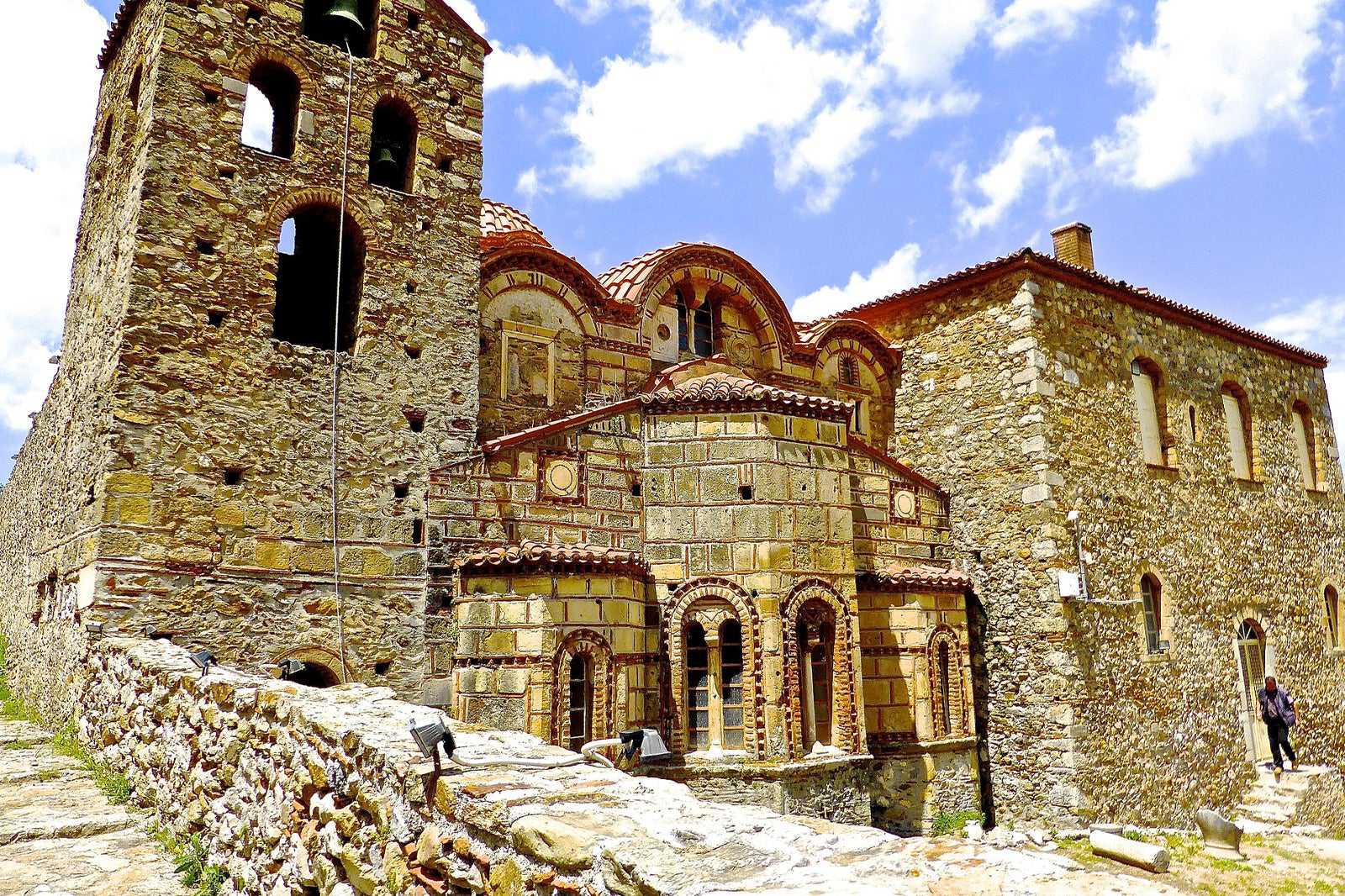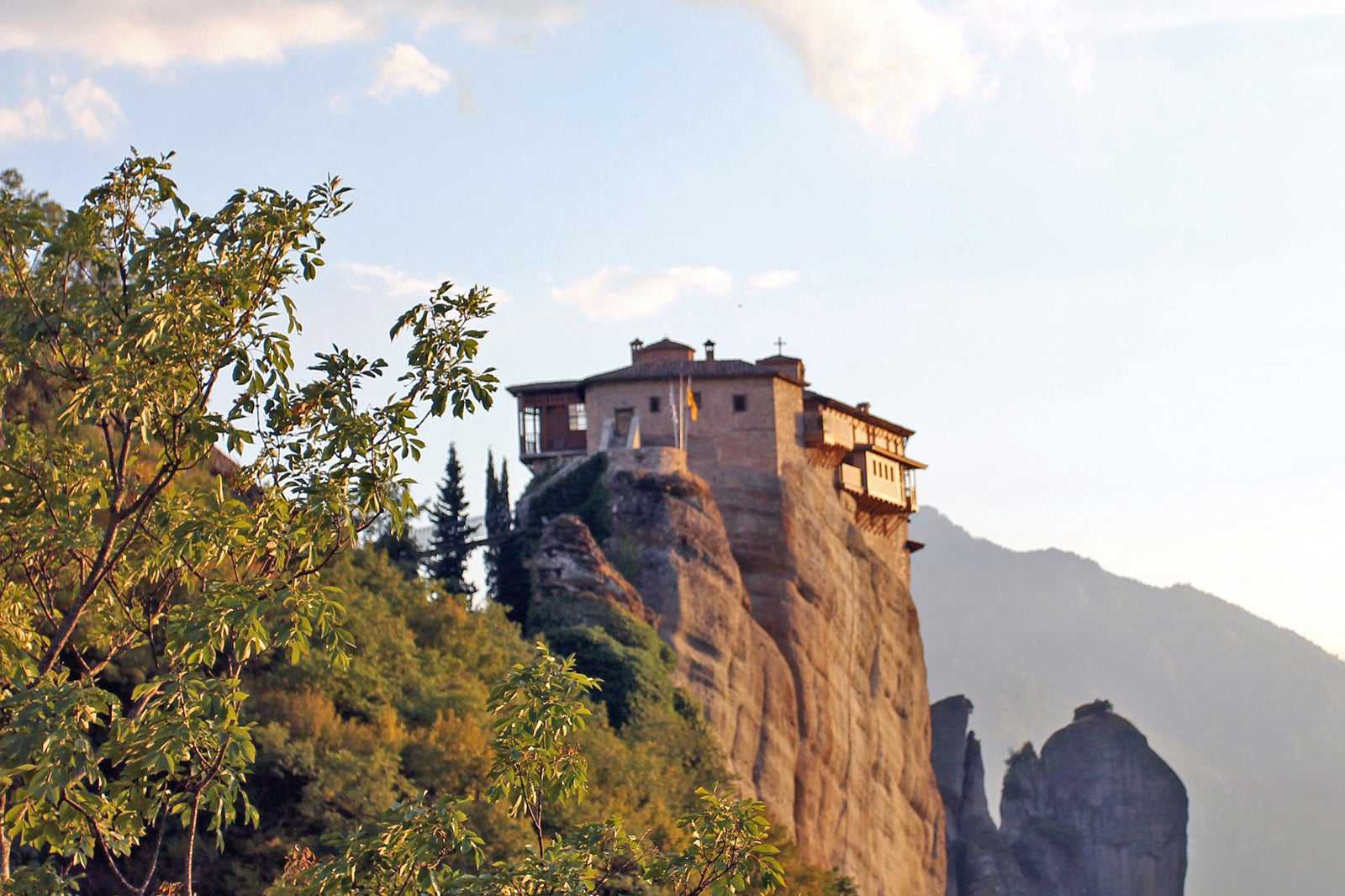When planning a visit to Greece, these remarkable ancient Greek ruins should definitely be on your checklist. Besides showcasing architectural and engineering marvels of the era, strolling through the vast temple grounds or what used to be bustling marketplaces can be truly inspiring. You can also spark envy by posting a selfie against backdrops from the late Bronze Age or Hellenistic Period.
Some of the amazing sites that you simply can’t miss include the Acropolis, perched on top of a rock with the Parthenon as its major landmark. We’ve gathered other notable sites below, ranging from lost cities, grand temples and royal burial grounds where you can step back in time to Ancient Greece.
- 1
Acropolis of Athens
Ancient architectural wonders perched on a rock

- History
- Photo
The Acropolis is literally the high point of any trip to Athens – Ancient Greece’s archaeological wonder occupies a large and elevated flat rock that overlooks the capital. The hilltop site’s jewel in the crown is the Parthenon, an imposing temple dedicated to Athena, the patron goddess of the city.
Interestingly, various restoration efforts over the site continue to this day, bringing back most of the forms of the 5th-BC temple complex. You can follow the path known as the Panathenaic Way down from the Acropolis of Athens, which is an ancient ceremonial route that leads you from the town and up to Agora Square.
Location: Athens 105 58, Greece
Map - 2
Mystras
A fortified town near ancient Sparta

- History
- Photo
Mystras, also called the town of Myzithras, is a fortified town in Peloponnese, the heartland of Ancient Greece on the Mani peninsula. The town’s scenic landscape – complete with scenic and flowing hills – is peppered with medieval ruins that range from Mycenaean domes to hillsides covered in fallen columns of grand temples.
Impressive ancient buildings that still stand tall today around the town of Mystras include the 13th-century hilltop fortress that was built by William II of Villehardouin, as well as the Pantanassa Monastery, a Byzantine and Gothic legacy that’s well kept and has a series of pleasant pathways flanked by flowering gardens and shrubs.
Location: Mystras 231 00, Greece
Map - 3
Castle of Monolithos
A medieval hilltop castle with fantastic views

- History
- Photo
The medieval castle ruins of Monolithos Castle stands on top of a tall rock on the southwestern coast of Rhodes Island. The Byzantine castle dates back to the 15th century and had a newer castle built on top of it. Many travellers make the pilgrim to the top to marvel at the stunning Greek island views – the ruins simply add to the dramatic effect.
The journey to the castle is part of the adventure. Start off at Monolithos Village and continue along a forested road that’s usually lined with stalls of local vendors selling honey, olive oil, and traditional drinks.
Location: Ataviros 851 08, Greece
Mapphoto by Waielbi (CC BY-SA 3.0) modified
- 4
Temple of Apollo, Delphi
Climb the hill to consult an ancient Greek oracle

- History
- Photo
The Temple of Apollo, set high on the slopes of Mount Parnassos, is the jewel of Ancient Delphi. It’s where people from all over Ancient Greece used to make their pilgrims to seek wisdom from the namesake Greek oracle and sun god. You can follow an uphill path to the temple, which is riddled with a variety of stone ruins that range from treasuries to monuments.
If Olympia had its Olympic Games, Delphi had the Pythian Games which included arts, music and poetry competitions besides sporting events. That’s why you can find a massive 5,000-seater amphitheatre on the slopes near the temple, which hosted these events. You can reach Delphi on a roughly 2-hour drive northwest of Athens.
Location: Delphi 330 54, Greece
Map - 5
Meteora
The sacred mountains of Ancient Greece

- History
- Photo
Meteora is a complex of breathtaking monasteries and hermitages, built mostly on top of tall rock pillars in the town of Kalabaka. A UNESCO World Heritage site in Athens, the series of spectacularly gigantic rock formations in the mountainous region of north-western Greece looms over the quiet town.
Most of the monasteries were abandoned and left to ruins following natural disasters and series of turmoil, while a few remaining ones had been repopulated in the past century by monks from Mount Athos – another sacred Greek mountain. The drive to Meteora is also considered by many to be among the most scenic road trips one could take through Northern Greece.
Location: Mitropoleos, Athens 105 56, Greece
Phone: +30 21 0335 2380
Map - 6
Kameiros
Explore the remains of an ancient city

- History
- Photo
The vast ruin of Kameiros is a prominent archaeological site on the Greek island of Rhodes. The ancient city-state dates back to 7th century BC and was almost entirely demolished following an earthquake. Today, you can stroll through the remains of the city with a few columns still standing in the marketplace.
Throughout the city, you’ll get a feel of how folk went about in the city and how they used to live their lives. The residential area has half walls with a series of living quarters. The summit is where you can visit the Temple of Athena, which looks over the city and the scenic seascape beyond.
Location: Kameiros 851 06, Greece
Mapphoto by EffiDK (CC BY-SA 4.0) modified
- 7
Olympia
The birthplace of the Olympic games

- History
- Photo
Olympia Theatre is an ancient Greek sanctuary, whose name gave way to the major international sporting event we know today. It is where ancient athletes trained and where they were put to the test. Strolling through the vast complex, you’ll easily find that it’s much more than a sports arena.
Standing columns nestled among lush trees and pathways, with a series of temples. It is a primarily an ancient religious site dedicated to Zeus and other gods in the Greek pantheon, like Nike. Olympia Theatre was only opened to the masses during the ancient Olympic game festival held for Zeus himself.
Location: Archaia Olympia 270 65, Greece
Mapphoto by John Karakatsanis (CC BY-SA 2.0) modified
- 8
Ancient Corinth
An ancient acropolis surrounded by lush landscape

- History
- Photo
The extensive ruins of the ancient city of Corinth, otherwise referred to locally as Korinthos, lies between the Greek mainland and the Peloponnese peninsular region in southern Greece. While you’ll find only a few Doric columns from the 6th-century temple of Apollo standing tall here, the breathtaking landscape alone is worth the road trip.
The ancient Corinthian metropolis saw its fall following a massive raid by the Ancient Romans, who also went on to enslave its people. On your visit here, check out the Fountain of Peirene, which served as the primary source of water and also forms the city’s epicentre.
Location: Archaia Korinthos 200 07, Greece
Phone: +30 2741 031207
Map - 9
Theatre of Epidaurus
An extraordinary technological breakthrough from Ancient Greece

- History
- Photo
The Theatre of Epidaurus is an ancient Greek amphitheatre hidden in the hills of the same name, about a 2-hour drive southwest from Athens. It is known not only for its grand scale – seating 14,000 spectators – but also for its advanced acoustics, which were a technological breakthrough of its time.
The theatre’s 55 rows of limestone seats were precision-cut into a bowl shape on the hillside. You can swap places with a travel partner and check out the acoustics for yourselves. Near the amphitheatre are the remains of a healing centre – music was believed to be a major part of medicine in Ancient Greece.
Location: Epidavrou, Tripolis 210 52, Greece
Map - 10
Kerameikos Cemetery
Ancient graves with archaeological treasures

- History
- Photo
Depending on your perspective, Kerameikos Cemetery can come across either as haunting or beautiful. This ancient grave complex, in fact, started out as a settlement of potters – hence the name, which we borrowed for ‘ceramics’ in English. It just so happened that there were tombs on the site dating back to the early Bronze Age.
The cemetery expanded from around 1,000 BC onwards and was eventually used during the Christian period through the 6th century AD. Some of the tombs are peculiarly designed, with intricate carvings and monumental statues. Check out the excavated sites and a small onsite museum with its amazing collection of ancient ceramics.
Location: Ermou, Athens 105 53, Greece
Mapphoto by Paweł 'pbm' Szubert (CC BY-SA 3.0) modified
- 11
Acropolis of Lindos
An ancient citadel atop a steep cliff

- History
- Photo
The Acropolis of Lindos is a naturally fortified citadel set on top of a cliff overlooking the modern town on the south-eastern coast of Rhodes Island. The ancient site offers breathtaking views over the Aegean seascape. A series of stone steps leads you through the Acropolis’ many scenic levels.
From down below in the charming town, it may look like a daunting climb up to the rock formation. But you can easily reach the citadel by foot or by riding donkeys, which are provided by local guides for about €7. A separate fee, usually from about €12, applies at the fortress’ entrance.
Location: Lindos 851 07, Greece
Phone: +30 2244 031258
Map - 12
Ancient Agora of Athens
The heart of ancient Athens

- History
- Photo
The Ancient Agora of Athens is an unmissable bonus site near the Acropolis where you can explore the remains of an ancient Greek marketplace. It’s a 15-minute walk northwest from the magnificent Acropolis. There’s an onsite museum with a collection of interesting Athenian artefacts on display, where you can learn about how life was back in ancient times.
The museum also features statues and busts which adorned the streets of the Agora. Excavations have been carried out throughout the site since 1931, with treasures continuously being discovered, exhumed, restored, and put on display to this day. Surrounding the site are scenic hillsides that add to the photo opportunities.
Location: Adrianou 24, Athens 105 55, Greece
Open: +30 21 0321 0185
Mapphoto by George E. Koronaios (CC BY-SA 4.0) modified
- 13
Ancient Mycenae
A fortified city from the Bronze Age

- History
- Photo
Ancient Mycenae is one of the oldest Greek archaeological sites on the Peloponnesian Peninsula. The hilltop fortified city dates back the 7th century BC and features the ruins of an acropolis, a palace as well as a series of tombs. The Mycenaeans were considered the first Bronze Age society to emerge on the European mainland.
You can explore the ruins of the ancient city with rewarding vistas from the top – rolling green hills with the blue waters of the Argolic Gulf in the far distance. Find the awe-inspiring Lion Gate with its stacked boulder archway with carved lions at its peak.
Location: Mycenae 212 00, Greece
Open: Daily from 8 am to 8 pm
Phone: +30 2751 076585
Mapphoto by Vislupus (CC BY-SA 4.0) modified
- 14
Knossos Archaeological Site
The legacy of a lost Minoan civilisation

- History
- Photo
Knossos is an ancient city on the island of Crete that’s known to be the remaining legacy of a lost Minoan civilisation. It’s also considered to be the largest Bronze Age archaeological site on the island as well as being Europe's oldest known city.
Among the ruins, check out the magnificent palace complex of Knossos which you can explore inside and discover a maze of different rooms and quarters. Some of the walls and pavements are coated in red ochre and vividly pigmented frescoes. You can view a great collection of art dating back to the Bronze Age at the Heraklion Archaeological Museum.
Location: Knossos 714 09, Greece
Map - 15
Ancient Aigai
Discover old Macedonian royal tombs

- History
- Photo
Ancient Aigai, which roughly translates to ‘The Land of Goats’, is known as the land of the warrior kings of Macedonia. It’s called Vergina today. Deep in a hillside lies a royal burial site of Macedon, which also surprisingly included the tomb of Phillip II, the father of Alexander the Great.
One of the best places to see the treasures of Ancient Aigai is at the Museum of Royal Tombs. Here, you can marvel at the series of dazzling objects, ranging from intricate Macedonian wall art and delicately crafted golden diadems to small yet detailed carvings of ivory figures that were found inside Phillip II’s tomb.
Location: Vergina 590 31, Greece
Open: Monday from 8 am to 8 pm, Tuesday from midday to 8 pm, Wednesday–Sunday from 8 am to 8 pm
Phone: +30 2331 092347
Mapphoto by Klaus-Peter Simon (CC BY-SA 3.0) modified



















